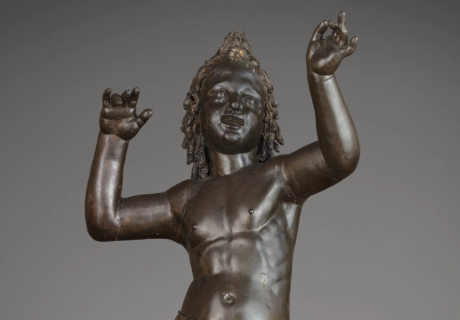Tuscany’s Unesco sites
6 min · 29 May 2023

Tuscany boasts an extraordinary natural, cultural and historical heritage: it is a treasure trove unique in the world. It is therefore not surprising that it is one of the Italian regions with the highest concentration of UNESCO World Heritage sites.
What are they? Let’s find out together.
The historic centre of Florence
The first of the Tuscan sites to have been included in the UNESCO list is the historic center of Florence. It is defined as: “a unique artistic creation, an absolute masterpiece, the result of continuous creation lasting six centuries. Here we find, in addition to the Museums […] the strongest concentration of works of art known throughout the world”. The UNESCO site coincides with the perimeter of the 13th century Arnolfa walls. We are in front of a sort of open-air museum, whose majesty is given by architectural masterpieces such as the Cathedral of Santa Maria del Fiore, the Church of Santa Croce and the Uffizi Palace, and by works by great masters such as Giotto, Brunelleschi, Botticelli and Michelangelo.
Piazza del Duomo in Pisa
Piazza del Duomo in Pisa, included in the UNESCO World Heritage List in 1987, contains one of the most renowned and surprising urban landscapes in the world. It was renamed “meadow of miracles” by the famous writer Gabriele D’Annunzio for the exceptional beauty of the monuments that overlook it: the Cathedral, the Baptistery, the Bell Tower or Leaning Tower and the Cemetery, also known as Campo Santo. The monumental complex was built between the 11th and 14th centuries and constitutes a fundamental stage in the history of medieval architecture. Inside these buildings there are also valuable art treasures such as the bronze and mosaic doors of the Cathedral, the frescoes of the Campo Santo and the pulpits in the Baptistery and the Cathedral.
The historic center of San Gimignano
Immersed in the Sienese hills, San Gimignano has kept its fourteenth-century layout intact. The town is nicknamed the Manhattan of the Middle Ages for its noble towers, of which only 14 remain of the 72 it once had. The historic center was included in the Word Heritage list with this motivation: “A masterpiece of human creative genius, it bears the unique testimony of a civilization of the past and the exceptional example of an architectural and landscape complex, testimony to important stages of human history” . In addition to this, it preserves important masterpieces of Italian art from the 14th and 15th centuries such as the frescoes by Benozzo Gozzoli and Domenico Ghirlandaio in the Collegiate Basilica of Santa Maria Assunta.
The historic center of Siena
Nestled among the Tuscan hills, Siena is a splendid city full of remarkable works of art, unforgettable museums and architectural masterpieces. It has retained its characteristic Gothic appearance and is famous above all for the large Piazza del Campo, one of the most beautiful in Europe, where the Palio takes place twice a year, a strange race with an ancient flavor in which anything goes bring honor and glory to one’s district (Siena has 17). Its historic center represents one of the archetypes of a medieval city and has been defined as: “a masterpiece of inventiveness, where the buildings were designed to adapt to the urban fabric and form a whole with the surrounding landscape”.
The historic center of Pienza
Positioned on the top of a hill overlooking the Val d’Orcia, Pienza is one of the rare “ideal city” projects of the Renaissance put into practice. The application of this principle “resulted in a masterpiece of man’s creative genius.” It was founded in the Middle Ages but in the late 15th century it was completely redesigned, even losing its ancient name of Corsignano. Pope Pius II commissioned the architect Bernardo Rossellino to transform the appearance of the town that gave him birth. The city plan revolves around the harmonious Piazza Pio II, overlooking the Duomo, with its tripartite travertine façade, the Bishop’s Palace, the Town Hall and of course the beautiful Piccolomini Palace.
The Val d’Orcia
The wonderful landscape of the Val d’Orcia has been part of the Italian UNESCO heritage sites since 2004. Its distinctive features inspired a large number of artists during the Middle Ages and its images have become an icon of the Renaissance. Below is one of the criteria that justified the inclusion of the Val d’Orcia in the World Heritage List: “an exceptional example of how the landscape was redesigned in the Renaissance age with the aim of reflecting the ideals of good governance and at the same time realizing an appreciated aesthetic image”. The territory includes locations and monuments of notable historical and artistic importance such as the Rocca di Tentennano in Castiglione d’Orcia and the Fortress of Radicofani.
The Medici villas and gardens
The Medici villas and gardens have been included in the List of Cultural and Natural Heritage of the UNESCO World Heritage for their cultural, artistic and landscape relevance. Built during the Medici government, between the 15th and 17th centuries, they immediately represented a new model of princely residence and “constituted a series of key places where ideals and tendencies typical of the Italian Renaissance emerged, which were followed and spread throughout Europe”. In total there are 14 sites, 12 villas and 2 gardens, among which we highlight Villa del Trebbio in San Piero a Sieve, Villa di Poggio a Caiano, Palazzo di Seravezza, Villa La Magia in Quarrata, Boboli Gardens in Florence and Park of Pratolino in Vaglia.








